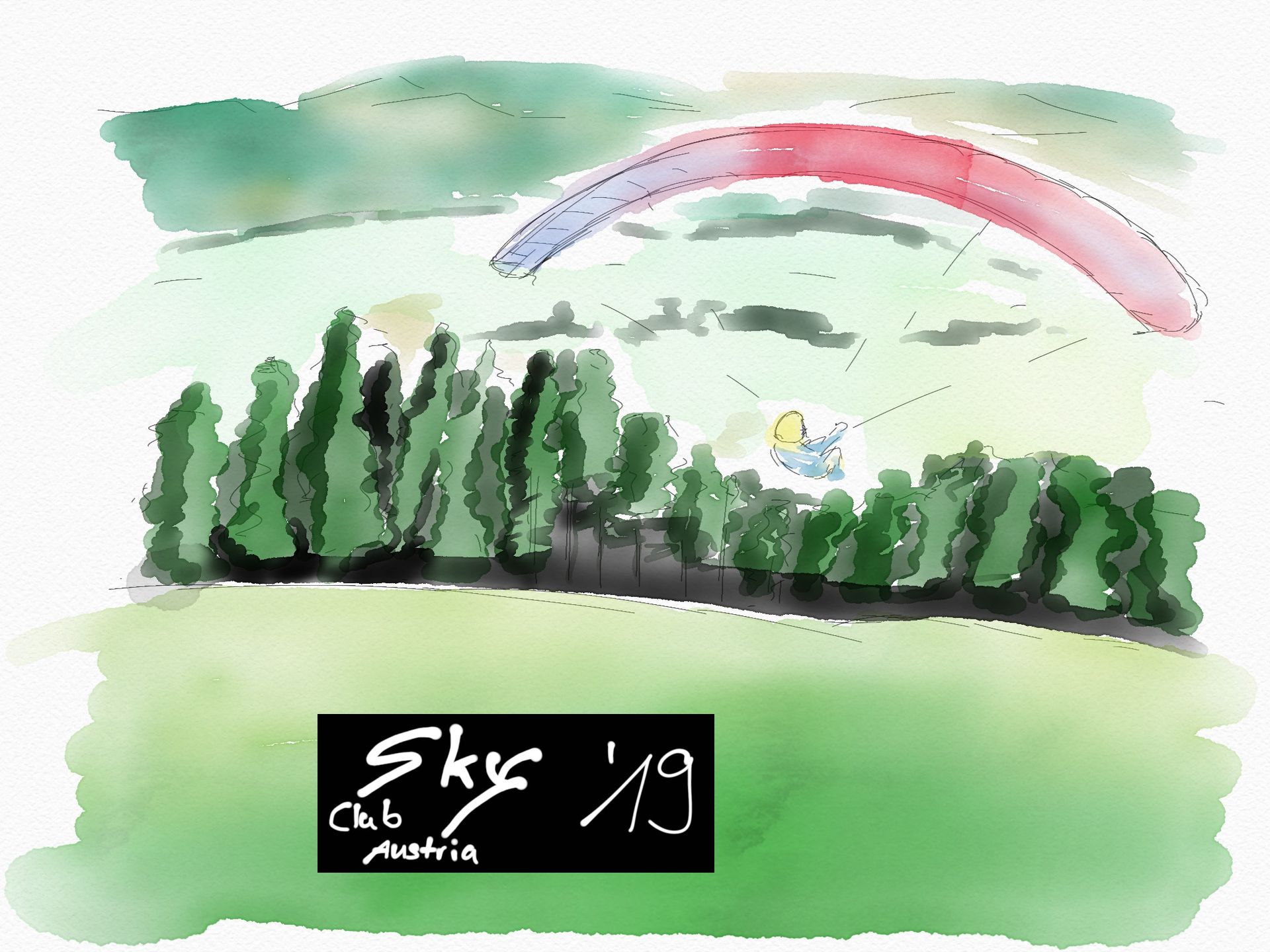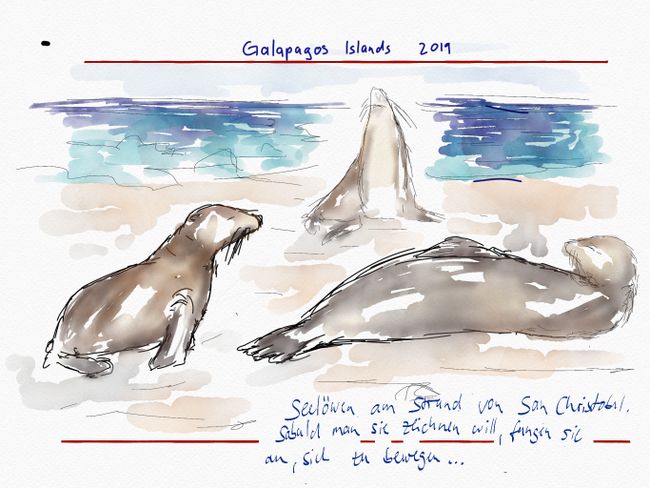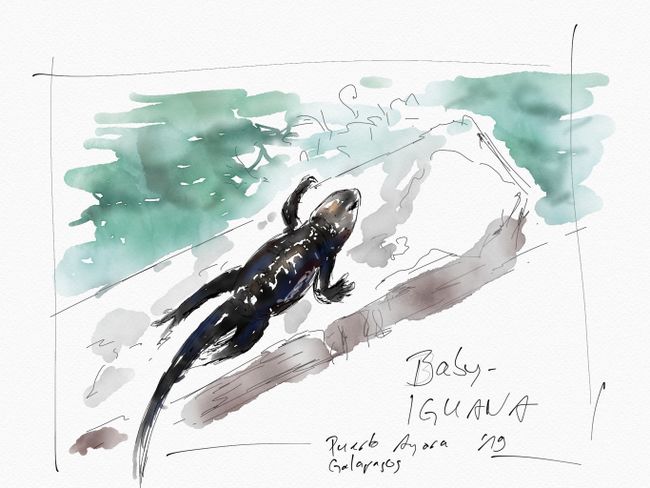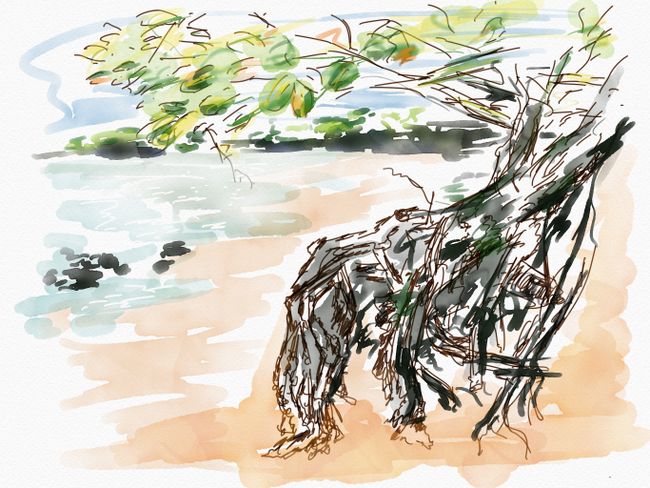गैलापागोस में 3 सप्ताह
प्रकाशित: 30.09.2019
समाचार पत्रिका के लिए सदस्यता लें
Now I'm lying by the pool of a upscale mid-range hotel on Santa Cruz, and for the first time I have both time and a stable Wi-Fi connection, so I can review the events of the past few weeks. The journey was long, but thanks to layovers in Mexico City and overnight in Quito, not too exhausting. Plus: Aeromexico offers free internet (at least messenger services) in addition to decent food. All the excitement about an extremely bureaucratic entry was unnecessary, while there are rules about what can be brought in, you need an additional document and your bags are checked more often than usual, it's hardly more complicated than entering Australia, for example. No one wanted to see a complete travel plan with pre-booking of all hotels, as officially required.
My first stop was Puerto Ayora, the largest city on the Galapagos Islands on Santa Cruz. First impression: pretty rundown. The city is largely faceless, like many Central American cities, houses and squares often half ruins, electronics and household goods stores with lots of cheap Chinese wares in the windows, restaurants, faded naturalistic murals characterize the scene. The waterfront with the pier is nicer and naturally tailored to tourists with more expensive restaurants and souvenir shops. But even otherwise, a lot is happening here, especially in the evenings at the pier: tournaments are held on two volleyball courts, kids practice skateboard tricks at the skate park, there are demos against climate change and for women's rights, and - my highlight - there are cooking competitions and, unfortunately only once, food stands from the gastronomy school (better than the ones at HBS). Especially worth seeing is the fish market, where fishermen sell fresh lobsters, tuna, and Brujo, always accompanied by sea lions, pelicans, and frigate birds, who try to snatch a bite.
My fear that without expensive tours in Galapagos, there is nothing to do and see, was unfounded. On each of the inhabited islands, besides Santa Cruz, there are beautiful hiking trails for long walks and bike tours that are always worth it to have great views and observe the wildlife. The best places are on my favorite islands, San Cristobal Tijeretas for snorkeling in crystal clear water with sea lions, iguanas, turtles, and fish, as well as Playa Punta Carola for observing sea lions, and Concha de Perla on Isabela (which has a jetty where a few sea lions are often frolicking in the water and, a few steps from the harbor beach, sometimes also a penguin, besides turtles of course). On Isabela, you can easily observe the large and sometimes very old land turtles. Both Isabela and San Cristobal are also the most beautiful of the inhabited islands, with significantly smaller and more relaxed towns and even more beautiful surroundings than Puerto Ayora on the main island.
My tip: If you visit Galapagos, take a flight to San Cristobal and definitely pay a visit to Isabela for several days (It now has an ATM for a week).
Nevertheless, Santa Cruz also has at least two beautiful places: Las Grietas, a canyon connected to the sea, where you can swim and snorkel. Marine animals are rather sparse here, apart from some large and small tropical fish, but also fantastic azure blue and large moray eels, for which you have to dive a bit deeper. The other place is the beach at Tortuga Bay. Snorkeling is rather bad here because you can't see much due to the swirling white sand, but on the beach, there is a picturesque colony of marine iguanas (which you can observe plentifully on all islands). In the mangrove forests on the beach, many sharks are resting.
I could then admire the larger specimens on excursions (unfortunately not cheap, on Galapagos you can hardly get a snorkeling-land tour for less than 100 euros, not even in the off-season, last minute...): On the tour to Kicker Rock, we snorkeled in the middle of a huge ball of sardines, the favorite food of boobies, who dived in from above, and fully grown blacktip and Galapagos sharks, which repeatedly and in large numbers crossed the school. Honestly: My nerves were too weak for this - you can't see anything through the wall of sardines, it's also not possible to move away from the ball because the living wall always moves a bit away from you before closing again - so you only see the 3-4 meter sharks in the last moment. But still: National Geographic live. The other spots were less nerve-wracking: besides many 2-meter-long but harmless whitetip sharks, there were smaller juvenile blacktip sharks, still exciting as it is up close and also huge schools here. In addition, sleeping rays with a span of 4 meters, eagle rays, seahorses, moray eels, and of course huge sea turtles. On the way to the tunnels, a beautiful volcanic water labyrinth, we passed one of the feeding grounds of manta rays, but unfortunately the guide here did not want to let us snorkel, and you also saw jumping mobula rays from time to time.
Otherwise, I'll let the videos speak for themselves, here are the links:
Galapagos underwater:
https://m.youtube.com/watch?v=s10PoxARqbU
Galapagos above water:
समाचार पत्रिका के लिए सदस्यता लें
उत्तर (4)
Sabine
Tolle Fotos über Wasser! Besonders gut gefallen mir die türkisen Füße dieses Vogels. Sieht witzig aus. :-) Und ich bin natürlich großer Fan von Sonnenuntergangsfotos!!
Ich bin immer wieder begeistert von deinen Zeichenkünsten! Ursula
Wunderschöne Filme von deinen Galapagoserlebnissen!!! Und die Seehund-Aquarelle sind dir richtig gut gelungen! Freu mich schon auf den nächsten Bericht!Michael
Tolle Filme!!! Freue mich drauf, dich im November mal zu sehen.Kay
Auf alle Fälle, Michi! Hab mich übrigens heute dir zu Ehren als Jedi Gehilfe betätigt und Darth Vader irgendwelche Pläne und ein blaues Laserschwert abgeluchst. So ganz hab ichs nicht verstanden, die Jedis sprechen in Toronto leider nur Ami-Englisch oder Französisch.... 





